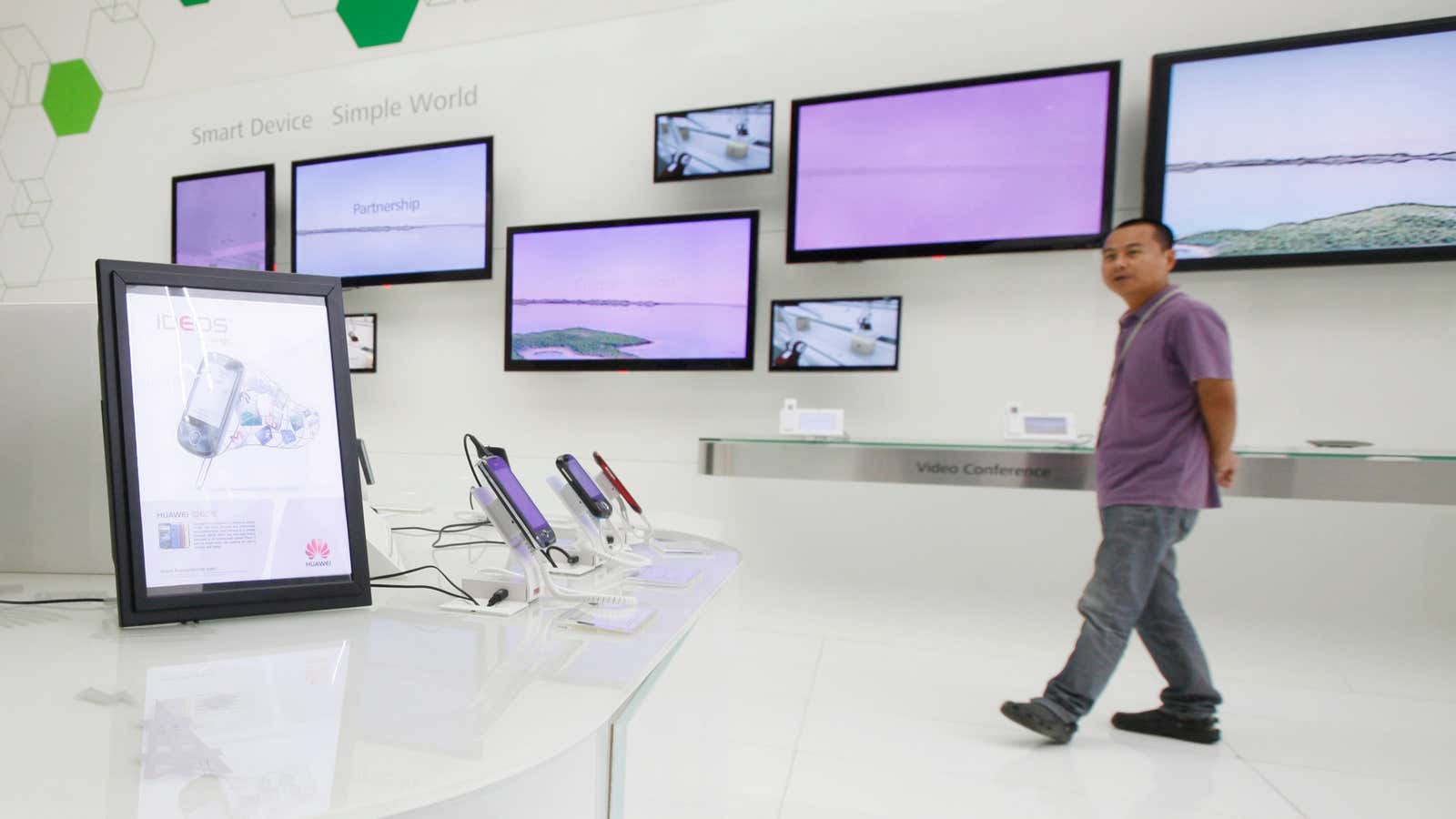Students in India can now buy a fully-functional 7″ tablet, the Aakash 2, for about $20 after a government subsidy, or about $45 retail. These are prices that could bring computing to hundreds of millions in the developing world, and their effects in rich countries could also be profound. But if you live outside the developing world, don’t run down to your local electronics retailer just yet; you simply can’t get this much functionality at this price.
The reasons are myriad, but they boil down to this: These tablets are already so cheap that your distance from the supply chains that build them can add 100% to their final cost. In this way, they’re like many other goods.
Suneet Tuli, CEO of Datawind, maker of the Aakash 2 tablet, recently explained to me all the costs that are added to a commodity 7″ tablet from China when someone attempts to import it to India. (Much of this applies to attempts to import the same tablet into any other country.) Here’s how a $45 tablet purchased wholesale in Shenzhen, China winds up costing at least $100 in India:
- $2 for shipping from China to India
- $9 for customs clearance, duties, and taxes
- $12 margin for the importer, or 20% of its cost up to this point. The 20% margin includes a number of costs, says Tuli. Unlike mobile phones, which are often marketed by mobile telecommunications companies, cheap tablets don’t have built-in sales channels. So that importer is going to use part of that margin on advertising, marketing and promotions.
- $6 warranty. Even if a tablet from China has a warranty on it, an Indian reseller will have to provide one of his own. “In India, when you bring something from China, you can’t send a warranty back to China—you have to absorb the cost of a warranty,” says Tuli. Electronic goods in India also break more often than in other countries, with 1 out of 10 failing before its warranty is out, compared to 1 in 50 in the US. It’s simply a rougher environment, and electrical service in India is less consistent, which puts wear on electronics.
- $15-20 for three layers of distributors. In India, retail distribution channels are very fragmented when compared to richer countries. First, says Tuli, there’s the brand importer, who brings goods into the country. (He already took the 20% margin above.) This person sells to a “super stockist,” a sort of wholesaler to wholesalers. The super stockist sells to distributors, who then sell to a retailer, and, finally, that retailer sells to a consumer. With each layer of distribution taking a 5-7% commission, our $75 tablet is now over $90.
As an example of how these costs add up, Tuli cites the Micromax Funbook, which is currently the most popular tablet in India and has approximately the same specifications as the Aakash 2. It retails for 6,500 rupees, or about US$120. Datawind’s tablet is less than half that price because it avoids many of the costs outlined above in at least two ways: First, the Aakash 2 is assembled in India. Second, rather than going through retailers, the company distributes its tablet either through the government or online.
In the case of online sales, the tablet is delivered by either FedEx or DHL, which will transport something the size of the Aakash 2 anywhere in India for $3, with collection on delivery. That means payments are handled by the shipper, which then passes the money on to Datawind.
In China, it’s a similar story, says Jay Goldberg, a financial analyst who returns to China often. Functional 7″ sample tablets can be had at Shenzhen malls devoted to electronics for as little as $45. That’s because the supply chains required to build these devices are located in the city and in nearby provinces.
Many of China’s cheap tablet manufacturers gained the ability to manufacture these devices almost by accident, says Goldberg. It all started with the manufacture of cell phones.
“Not quite 10 years ago, Mediatek of Taiwan entered the cell phone market,” says Goldberg. Mediatek found contract manufacturers in mainland China that had machines to put chips on circuit boards, and they were mostly doing this as subcontractors, churning out parts for larger electronics companies with recognizable brands. Mediatek figured out it could save money by handing these manufacturers both the chips required to build a phone and a complete blueprint for assembling them into basic phones. That transformed thousands of small manufacturers from subcontractors into factories for completed products, and that expertise has since been transferred to the manufacture of smartphones as well as tablets.
In order to bring cheap Chinese or Indian-style manufacture of tablets to the US, the supply chains present in both countries would have to be recreated in the US. The same could be true of many other countries. As I reported in an earlier piece on the Aakash 2, this means that many markets will see their own, regional tablets. Whether or not the first usable $50 tablet in the US will be built by Datawind remains to be seen. What’s inevitable is that someone will accomplish it.
